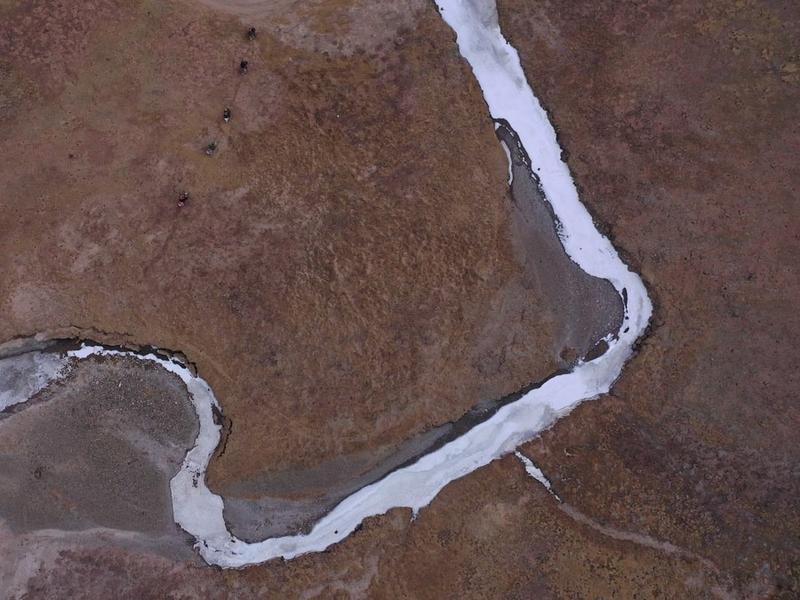 Aerial photo taken on April 21, 2022 shows rangers patroling around Yoigilangleb Qu (river) in Qumalai County of Yushu Tibetan Autonomous Prefecture in northwest China's Qinghai Province. (PHOTO / XINHUA)
Aerial photo taken on April 21, 2022 shows rangers patroling around Yoigilangleb Qu (river) in Qumalai County of Yushu Tibetan Autonomous Prefecture in northwest China's Qinghai Province. (PHOTO / XINHUA)
XINING — Sitting at his computer, Kunlek Namgyal can monitor the water ecology status of key areas, such as the Sanjiangyuan area, in real time through a video system with just a click of the mouse.
The Sanjiangyuan area, known as China's "water tower", contains the headwaters of the Yangtze, Yellow and Lancang rivers. In recent years, Yushu Tibetan autonomous prefecture in Northwest China's Qinghai province, which administers a part of the area, has been strengthening the protection of water resources through scientific and technological means.
The computerized system ... makes the ecological protection in this area more convenient and efficient.
Kunlek Namgyal, water resources remote monitor for the Sanjiangyuan area
Kunlek Namgyal, 26, is from Yushu's Zadoi county, located at the source of the Lancang River. Having grown up by the water and now in charge of managing the video monitoring system, he has developed a deep appreciation for the ecological changes taking place in the area.
"Due to its vast territory and inconvenient transportation, the ecological monitoring and protection of Sanjiangyuan have always relied on field patrols by people, which has problems, such as slow response, lengthy time frames, high cost and limited coverage," says Kunlek Namgyal. "The computerized system solves these problems well and makes the ecological protection in this area more convenient and efficient."
The development of the video monitoring system in Yushu began in 2019. The system consists of high-altitude observation video cameras at multiple vantage points, a real-time transmission network and a management and control platform, forming an important part of the ecological monitoring network in the Sanjiangyuan area.
Because there is no network signal and power grid coverage in many parts of the Sanjiangyuan area, the construction of some observation stations requires dedicated lines, which is difficult and expensive. So far, more than 11 million yuan ($1.6 million) has been invested in the system.
An integrated ecological environment monitoring network has been developed in Yushu, says Zhang Bo, deputy director of the ecological environment bureau of the prefecture.
The monitoring network has three tasks: obtaining the overall trend of change in the regional ecological environment through remote sensing satellites, using unmanned aerial vehicles and other small aircraft to realize regional environmental observation, and reflecting the ecological environment quality through ground observation stations.
"The completion and operation of the platform have effectively supported the supervision of the nature reserves and the monitoring of the diversity of species to help protect the water ecology in the source area," Zhang says.
On average, Yushu provides approximately 29.7 billion cubic meters of clean water annually to downstream regions.
Eurasian otters, which have high requirements for water quality, are also frequently spotted in Yushu's urban rivers.


